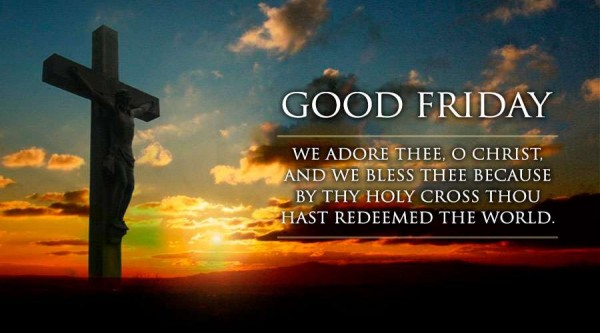Good Friday
Feast day: April 10
Heigo Ritsbek toim
https://www.catholicnewsagency...
Share to TwitterShare to WhatsAppShare to RedditShare to PrintFriendlyShare to More
On Good Friday, the entire Church fixes her gaze on the Cross at Calvary. Each member of the Church tries to understand at what cost Christ has won our redemption. In the solemn ceremonies of Good Friday, in the Adoration of the Cross, in the chanting of the 'Reproaches', in the reading of the Passion, and in receiving the pre-consecrated Host, we unite ourselves to our Savior, and we contemplate our own death to sin in the Death of our Lord.
The Church - stripped of its ornaments, the altar bare, and with the door of the empty tabernacle standing open - is as if in mourning. In the fourth century the Apostolic Constitutions described this day as a 'day of mourning, not a day of festive joy,' and this day was called the 'Pasch (passage) of the Crucifixion.'
The liturgical observance of this day of Christ's suffering, crucifixion and death evidently has been in existence from the earliest days of the Church. No Mass is celebrated on this day, but the service of Good Friday is called the Mass of the Presanctified because Communion (in the species of bread) which had already been consecrated on Holy Thursday is given to the people .
Traditionally, the organ is silent from Holy Thursday until the Alleluia at the Easter Vigil , as are all bells or other instruments, the only music during this period being unaccompanied chant.
The omission of the prayer of consecration deepens our sense of loss because Mass throughout the year reminds us of the Lord's triumph over death, the source of our joy and blessing. The desolate quality of the rites of this day reminds us of Christ's humiliation and suffering during his Passion. We can see that the parts of the Good Friday service correspond to the divisions of Mass:
Liturgy of the Word - reading of the Passion.
Intercessory prayers for the Church and the entire world, Christian and non-Christian.
Veneration of the Cross
Communion, or the 'Mass of the Pre-Sanctified.'
The Veneration of the Cross
In the seventh century, the Church in Rome adopted the practice of Adoration of the Cross from the Church in Jerusalem, where a fragment of wood believed to be the Lord's cross had been venerated every year on Good Friday since the fourth century. According to tradition, a part of the Holy Cross was discovered by the mother of the emperor Constantine, St. Helen, on a pilgrimage to Jerusalem in 326. A fifth century account describes this service in Jerusalem. A coffer of gold-plated silver containing the wood of the cross was brought forward. The bishop placed the relic on the a table in the chapel of the Crucifixion and the faithful approached it, touching brow and eyes and lips to the wood as the priest said (as every priest has done ever since): 'Behold, the Wood of the Cross.'
Adoration or veneration of an image or representation of Christ's cross does not mean that we are actually adoring the material image, of course, but rather what it represents. In kneeling before the crucifix and kissing it we are paying the highest honor to the our Lord's cross as the instrument of our salvation. Because the Cross is inseparable from His sacrifice, in reverencing His Cross we are, in effect, adoring Christ. Thus we affirm: 'We adore Thee, O Christ, and we bless Thee because by Thy Holy Cross Thou has Redeemed the World.'
Good Friday Feast day: April 10
Arvamus
TRENDING

























